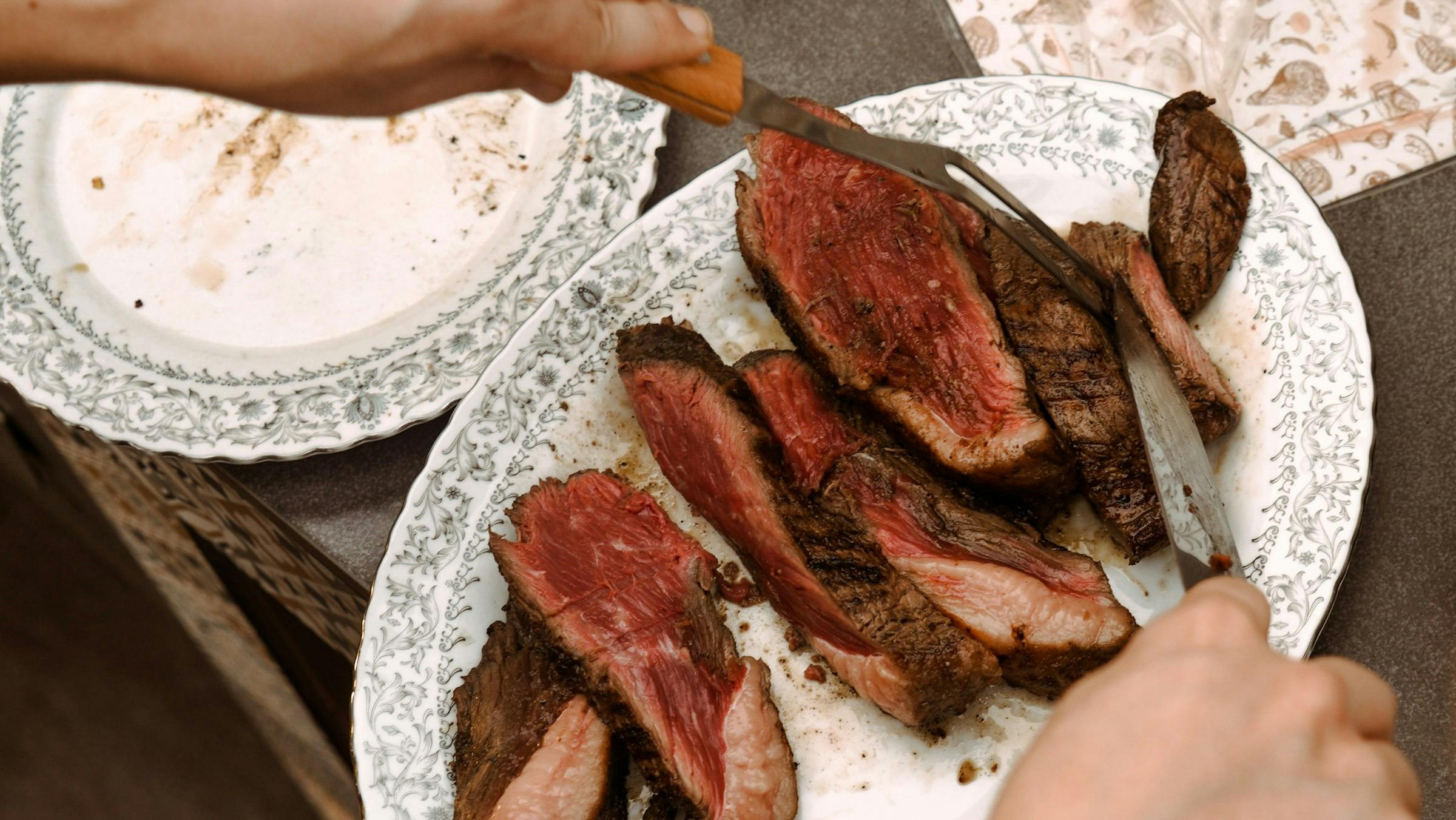20 Proven Tips to Lose Belly Fat Safely and Naturally (Backed by Science)
By Karyn O.
Reviewed by Dr. Jossy Onwude, MD
Published Sep 4, 2025
14 min read

Introduction: Why Belly Fat Matters More Than You Think
Almost everyone has wondered at some point: How do I get rid of belly fat? Maybe you’ve noticed your jeans fitting tighter, or perhaps you’ve been told that carrying too much weight around your waist isn’t just a cosmetic concern but also a health one. And that’s true.
Belly fat isn’t like the fat in other parts of your body. It’s often a sign of deeper health issues because it tends to build up around your abdominal organs. Doctors call this visceral fat, and it’s linked to problems like heart disease, type 2 diabetes, liver disease, and even certain cancers. It’s not just about how you look in the mirror; it’s about how healthy your body is on the inside.
The good news? Belly fat is not permanent. With the right approach—backed by science—you can reduce it and improve your overall health. This article explores 20 proven tips that can help you lose belly fat safely and naturally. We’ll keep it simple, practical, and realistic, so you can apply these strategies to your daily life.
The Science Behind Belly Fat
Before diving into the tips, let’s understand why belly fat is so stubborn. Your body stores fat in two main ways: under the skin (subcutaneous fat) and deep inside your belly around your organs (visceral fat). While both matter, visceral fat is more dangerous because it actively interferes with hormones, inflammation, and metabolism.
Several factors contribute to belly fat:
- Hormones like insulin, cortisol (the stress hormone), estrogen, and testosterone all play a role. High stress, poor sleep, or hormonal changes with age can make belly fat harder to lose.
- Genetics influence where your body stores fat. Some people naturally hold more fat in their midsection.
- Lifestyle factors—like what you eat, how active you are, and how much you sleep—are the biggest drivers.
One important truth: you cannot “spot reduce” fat. Doing hundreds of sit-ups won’t magically burn belly fat. The key is overall fat loss through nutrition, exercise, and lifestyle changes. As your body burns fat, your belly will shrink too.
20 Science-Backed Tips to Lose Belly Fat
1. Eat More Soluble Fiber
Fiber is one of the most underrated tools for losing belly fat. Soluble fiber absorbs water and forms a gel-like substance in your gut, slowing down digestion and making you feel full for longer. This reduces cravings and helps prevent overeating. Foods rich in soluble fiber include oats, flaxseeds, beans, lentils, Brussels sprouts, and apples.
Studies show that just a 10-gram increase in daily soluble fiber can significantly reduce belly fat over time. Adding beans to your salad, sprinkling chia seeds into smoothies, or choosing oatmeal for breakfast can make a noticeable difference.
2. Cut Back on Added Sugars and Sugary Drinks
Sugar is sneaky. It hides in sodas, juices, flavored yogurts, and even foods labeled as “healthy.” Too much sugar, especially from fructose, can lead to fat buildup around your belly and liver.
Sugary drinks are even worse because liquid calories don’t register in your brain the same way solid food does, so you end up consuming more. Swapping sodas and energy drinks for water, sparkling water, or unsweetened tea can help your waistline shrink much faster.
3. Eat More Protein-Rich Foods
Protein is the most powerful nutrient for weight management. It boosts your metabolism, reduces appetite, and helps preserve muscle while you’re losing fat. Since muscle burns more calories than fat, having more of it helps you keep weight off long-term.

Great sources of protein include eggs, chicken, fish, tofu, beans, Greek yogurt, and cottage cheese. Try to include a source of protein in every meal. Studies show that people who eat high-protein diets tend to carry less belly fat than those who don’t.
4. Swap Refined Carbs for Whole Grains
Refined carbs like white bread, pasta, pastries, and sugary cereals spike your blood sugar and insulin levels. Over time, this contributes to fat storage, especially in the belly. Replacing refined carbs with whole grains such as brown rice, quinoa, oats, and whole-wheat bread helps stabilize blood sugar and reduce cravings.
This doesn’t mean you need to cut out carbs entirely—your body needs them for energy—but choosing the right kinds makes a huge difference.
RELATED READ: Best Breads for Blood Sugar: Low-GI Options for Balanced Energy and Better Health
5. Limit Alcohol Intake
Ever heard of the “beer belly”? Alcohol contributes to belly fat in a few ways. It’s high in empty calories, it lowers your inhibitions around food (making you more likely to overeat), and it can increase fat storage around the liver and midsection.
You don’t need to cut alcohol completely unless you want to. But reducing your intake—especially of high-calorie drinks like beer and cocktails—can help shrink your waistline. Try setting a weekly limit or swapping alcoholic drinks for sparkling water with lemon.
6. Add Healthy Fats to Your Diet
Not all fats are bad. In fact, healthy fats like omega-3s and monounsaturated fats can actually help reduce belly fat. They keep you full, stabilize blood sugar, and support fat metabolism.
Good sources include olive oil, avocados, fatty fish (like salmon), nuts, and seeds. Just remember that fats are calorie-dense, so portion control matters. A handful of nuts or a drizzle of olive oil is enough.
7. Try Intermittent Fasting
Intermittent fasting is one of the most popular and effective methods for fat loss. It doesn’t tell you what to eat, but when to eat. Common methods include the 16:8 approach, where you fast for 16 hours and eat within an 8-hour window.
Studies show intermittent fasting can improve insulin sensitivity, boost fat burning, and reduce belly fat. It’s not for everyone, but if it fits your lifestyle, it can be a powerful tool.
8. Improve Gut Health with Probiotics and Fermented Foods
Your gut bacteria play a surprisingly big role in weight regulation. An imbalance in gut bacteria has been linked to weight gain and belly fat. Adding probiotic-rich foods like yogurt, kefir, sauerkraut, kimchi, and kombucha may help.
A healthy gut doesn’t just aid digestion—it also helps regulate appetite and metabolism. Some studies suggest that certain strains of probiotics can reduce visceral fat directly.
9. Drink Green Tea or Coffee
Green tea contains caffeine and antioxidants called catechins, both of which boost metabolism and fat burning. Coffee has similar effects thanks to its caffeine content, which increases energy expenditure and fat breakdown.
Of course, loading these drinks with sugar and cream cancels out the benefits. Enjoy them plain or with minimal sweetener for best results.
RELATED READ: Does Green Tea Really Burn Fat? The Truth About Weight Loss, Benefits & Drawbacks
10. Stay Hydrated
Sometimes your body confuses thirst with hunger, leading you to eat when you actually just need water. Drinking enough water throughout the day keeps you hydrated, supports digestion, and may even increase the number of calories you burn temporarily.
Starting your meals with a glass of water can also help prevent overeating. Aiming for at least 2 liters (about 8 glasses) daily is a good goal for most people.
11. Do More Cardio
Cardio, or aerobic exercise, is one of the most effective ways to burn calories and improve heart health. Activities like walking, jogging, cycling, and swimming all help reduce belly fat.

The key is consistency. Aim for at least 150 minutes of moderate-intensity cardio per week. Even brisk walking counts, and it’s one of the easiest and most sustainable forms of exercise.
12. Incorporate Strength Training
Lifting weights or doing bodyweight exercises like squats and push-ups builds muscle. More muscle means a higher metabolism, even at rest, which helps you burn fat more efficiently.
Strength training also prevents the muscle loss that often happens during weight loss. That means you’re not just losing weight—you’re shaping a stronger, healthier body.
13. Add High-Intensity Interval Training (HIIT)
HIIT workouts alternate short bursts of intense exercise with periods of rest or lighter activity. They’re highly effective for fat loss and can be done in less time than traditional cardio.
For example, sprinting for 30 seconds followed by 90 seconds of walking, repeated 8–10 times, makes for a quick but powerful workout. Studies show HIIT may burn more belly fat than steady-state cardio.
14. Move More Throughout the Day
Exercise isn’t the only way to burn calories. Small movements throughout the day—called NEAT (non-exercise activity thermogenesis)—add up. Standing instead of sitting, taking the stairs, or walking while on the phone all contribute.
If you have a sedentary job, set reminders to get up and stretch or take short walks. These small habits can significantly increase your daily calorie burn.
15. Prioritize Quality Sleep
Sleep is often overlooked when it comes to weight loss, but it’s critical. Poor sleep disrupts hunger hormones, increases cravings, and raises stress levels—all of which promote belly fat storage.
Most adults need 7 to 9 hours of quality sleep each night. Creating a bedtime routine, limiting screens before bed, and keeping a consistent schedule can improve sleep quality.
16. Reduce Stress and Cortisol Levels
Chronic stress increases cortisol, a hormone that encourages fat storage in the belly area. Managing stress through meditation, deep breathing, yoga, or even hobbies can lower cortisol levels.
Even something as simple as spending time outdoors or talking to a loved one can help reduce stress. Your waistline will thank you.
17. Limit Processed Foods and Junk Food
Processed foods are often high in refined carbs, sugar, and unhealthy fats. They’re designed to be addictive, making it easy to overeat. Regular consumption contributes to belly fat and poor overall health.
Focusing on whole foods—vegetables, fruits, lean proteins, whole grains, and healthy fats—provides your body with the nutrients it needs without the excess calories.
18. Track Your Food and Progress
Awareness is a powerful tool. Many people underestimate how much they eat. Tracking your meals, even for a short time, can highlight patterns and help you make better choices.
You don’t need to obsess over calories forever. Even a week or two of food logging can give you insights that last a lifetime. Apps, journals, or even simple notes on your phone work well.
19. Be Consistent and Patient
Losing belly fat doesn’t happen overnight. It requires consistency in diet, exercise, and lifestyle changes. Quick fixes and crash diets might bring temporary results, but they often backfire.
The most effective approach is to build sustainable habits you can stick to long-term. Think of it as a marathon, not a sprint. Small, steady progress is better than short-lived extremes.
20. Combine Tips for Maximum Effect
Each of these tips works on its own, but the real magic happens when you combine them. Eating better, moving more, sleeping well, and managing stress all reinforce each other.
Think of your body as a system where everything is connected. Improving one area supports the others, creating a positive cycle that leads to lasting results.
Common Myths About Losing Belly Fat

Let’s clear up some of the most common misconceptions:
- “You can spot-reduce belly fat with ab workouts.” False. Crunches strengthen your abs but don’t directly burn belly fat.
- “Low-carb or keto is the only way to lose belly fat.” Not true. Any balanced, calorie-conscious diet can work.
- “Fat-burning supplements are the magic solution.” Most are ineffective or unsafe. Lifestyle changes matter more.
- “You can lose belly fat overnight.” Sustainable fat loss takes time. Anyone promising overnight results is misleading you.
How Long Does It Take to Lose Belly Fat?
This depends on your starting point, lifestyle, and genetics. On average, losing 0.5 to 1 kilogram (1–2 pounds) per week is considered safe and sustainable. You may notice small changes within weeks, but significant belly fat reduction often takes months of consistent effort.
Remember, the goal isn’t just a flatter stomach—it’s better health, energy, and confidence.
RELATED READ: Realistic Weight Loss Timeline: How Long It Really Takes to Lose Weight
When to Seek Professional Help
If you’re struggling to lose belly fat despite making changes, or if your weight gain is sudden and unexplained, it may be worth consulting a healthcare professional. Hormonal imbalances, thyroid issues, or certain medications can play a role.
A doctor, registered dietitian, or fitness coach can help tailor a plan to your specific needs.
Final Thoughts: A Healthier You Beyond the Scale
Belly fat can feel stubborn, but it’s not unbeatable. By focusing on nutrition, exercise, sleep, stress management, and consistency, you can gradually reduce it while improving your overall health.
The most important thing to remember is that this journey isn’t just about appearance. Reducing belly fat lowers your risk of chronic disease, boosts your energy, and helps you feel more confident in your daily life.
Start with one or two tips, build momentum, and keep going. Over time, these small choices add up to big results.
Your healthiest self is waiting—one choice at a time.
Frequently Asked Questions (FAQs) About Losing Belly Fat
1. What causes belly fat in the first place?
Belly fat is usually caused by a mix of factors, including eating too many processed foods and sugary drinks, not getting enough exercise, poor sleep, high stress, and hormonal changes. Genetics can also play a role, but lifestyle choices are the biggest contributors.
2. Is belly fat more dangerous than fat in other parts of the body?
Yes. Fat under the skin (subcutaneous fat) is less risky, but belly fat often includes visceral fat, which surrounds your organs. Visceral fat is linked to higher risks of heart disease, type 2 diabetes, fatty liver disease, and certain cancers. That’s why reducing belly fat isn’t just about appearance—it’s about protecting your long-term health.
3. How long will it take before I see results?
Everyone is different, but safe and sustainable fat loss usually happens at a rate of 1–2 pounds (0.5–1 kg) per week. You may start noticing small changes in your waistline within a month, but significant results often take several months of consistent effort.
4. Do I have to cut out carbs completely to lose belly fat?
No. Cutting out carbs completely isn’t necessary for most people. The key is choosing the right kinds of carbs—like whole grains, fruits, and vegetables—instead of refined carbs like white bread, pastries, or sugary cereals. Balanced eating works better than extreme restrictions for long-term success.
5. Will doing sit-ups or crunches burn belly fat?
Not directly. Sit-ups and crunches strengthen your abdominal muscles, but they don’t specifically burn belly fat. Fat loss happens when you create an overall calorie deficit through a combination of diet, cardio, strength training, and lifestyle changes. As you lose fat, your abs will become more visible.
6. What’s the best exercise for belly fat?
There isn’t a single “best” exercise, but a combination works best: cardio (like walking, jogging, or cycling) to burn calories, strength training to build muscle and boost metabolism, and high-intensity interval training (HIIT) for efficient fat burning.
7. Can stress really cause belly fat?
Yes. Chronic stress increases cortisol, a hormone that encourages fat storage in the abdominal area. Managing stress through mindfulness, exercise, deep breathing, or hobbies can reduce cortisol levels and help with belly fat reduction.
8. Is intermittent fasting safe for everyone?
Intermittent fasting can be effective, but it’s not for everyone. People with diabetes, eating disorders, or certain medical conditions should consult a doctor first. For most healthy adults, fasting methods like 16:8 are generally safe and can help reduce belly fat.
9. Can you lose belly fat without exercise?
Yes, but it’s harder. Diet alone can reduce belly fat, but combining healthy eating with exercise gives faster and better results. Exercise not only helps burn calories but also improves insulin sensitivity, builds muscle, and prevents weight regain.
10. What foods should I avoid if I want to lose belly fat?
The main ones to limit are sugary drinks, alcohol, processed foods, refined carbs, and fried or fast foods. These often contain excess calories, sugar, and unhealthy fats that promote belly fat storage.
11. Are there quick fixes or supplements that melt belly fat?
Unfortunately, no supplement can magically melt belly fat. While some products are marketed as “fat burners,” most are unproven or unsafe. The only real solution is a mix of balanced eating, exercise, good sleep, and stress management.
12. What’s the healthiest way to start losing belly fat today?
Start small. Replace sugary drinks with water, add a 20–30 minute walk to your day, get 7–8 hours of sleep, and aim for balanced meals with protein, fiber, and healthy fats. These simple steps build momentum and lead to lasting change.
Share this article

Tips for Staying Healthy: 12 Simple Habits for Energy, Longevity, and Better Living
Editorial Team
Sep 30, 202510 min read

Is Eating Before Bed Bad? What Science Really Says About Late-Night Snacking
Editorial Team
Sep 25, 202512 min read

Low Sodium Diet: Simple Guidelines, Food Lists, and Tips for Better Health
Lilian E.
Sep 30, 202512 min read

Best-in-class care is a click away
Find everything and everyone you need to reach your metabolic health goals, in one place. It all makes sense with Meto.
Join Meto